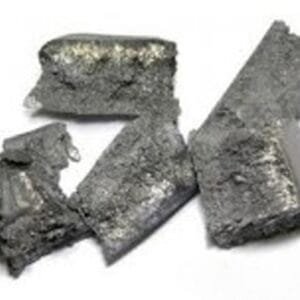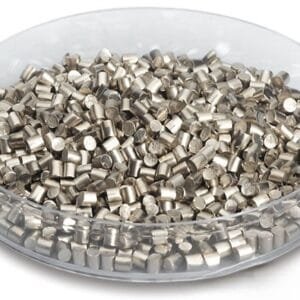Niobium Evaporation Material Description
Niobium is a light grey, crystalline, and ductile transition metal, particularly noted for its superior ductility in high-purity forms. Its strong resistance to oxidation makes it a preferred hypoallergenic alternative to nickel in jewelry. Additionally, niobium’s low capture cross-section for thermal neutrons makes it valuable in the nuclear sector. Because niobium and titanium share similar physical and chemical properties, they can be challenging to distinguish.
For deposition processes, high-purity niobium evaporation materials are essential to produce high-quality films. TFM specializes in niobium evaporation materials with purities up to 99.99%, ensuring consistent product quality through rigorous quality assurance practices.

Niobium Evaporation Material Specification
| Material Type | Niobium |
| Symbol | Nb |
| Atomic Number | 41 |
| Color/Appearance | Gray, Metallic |
| Melting Point | 2,468 °C |
| Density | 8.57 g/cc |
| Synonyms | Nb Pellets, Nb Pieces, Nb Evaporation Pellet, Niobium Pellets, Niobium Pieces, Niobium Evaporation Pellet |
Niobium Evaporation Material Application
Used across a range of deposition techniques like semiconductor deposition, chemical vapor deposition (CVD), and physical vapor deposition (PVD), these processes are essential in various industrial applications. In the field of optics, these methods are employed for several purposes, including enhancing wear resistance, creating aesthetic coatings, and developing advanced display technologies.
Niobium Evaporation Material Packaging
We take great care in managing our niobium evaporation materials, focusing on meticulous handling to prevent any damage throughout storage and transportation. This attention to detail ensures that the materials retain their original quality and condition.
Get Contact
TFM provides a diverse selection of niobium evaporation materials, available in various forms, purities, sizes, and price points to meet different requirements. We specialize in high-purity e-beam evaporation materials, crafted to offer exceptional density and minimal average grain sizes. For the latest pricing on our evaporation pellets or other deposition materials not featured, please reach out to us with your specific inquiry.


 MSDS File
MSDS File



Reviews
There are no reviews yet.